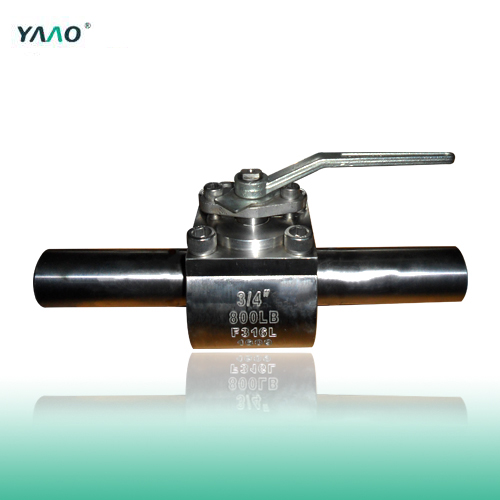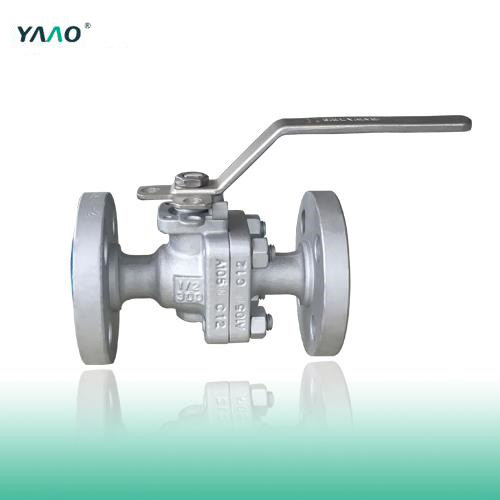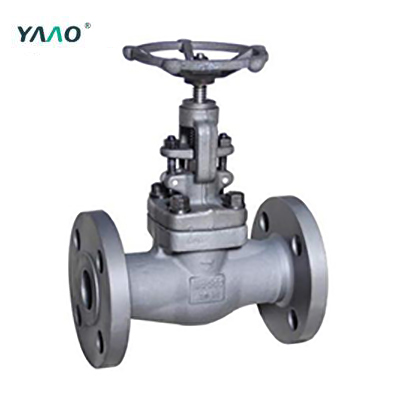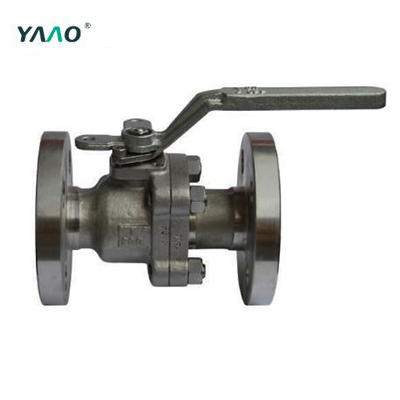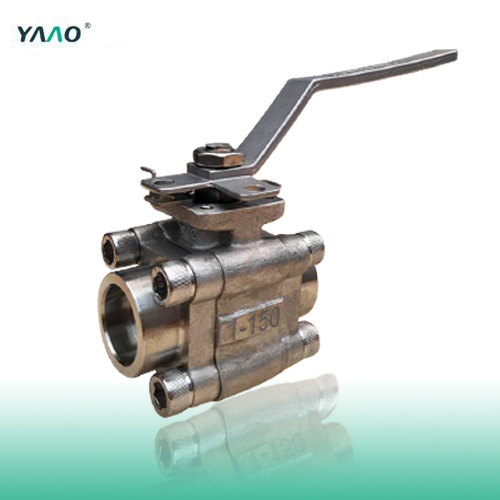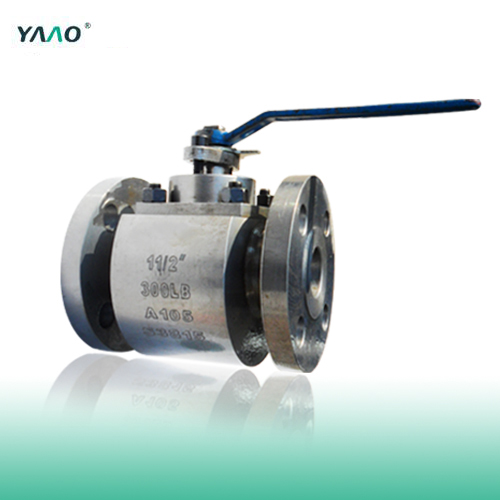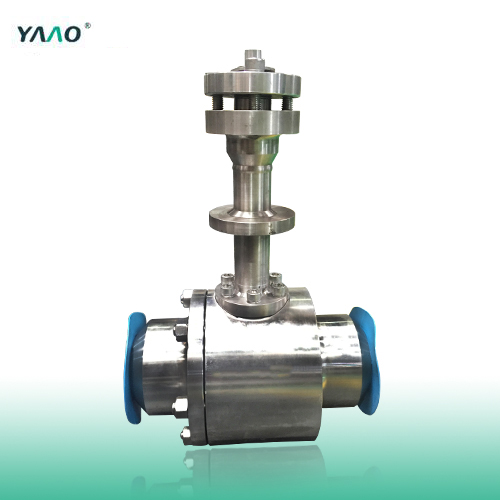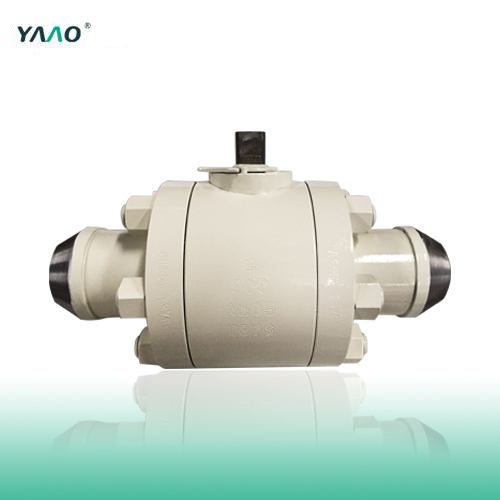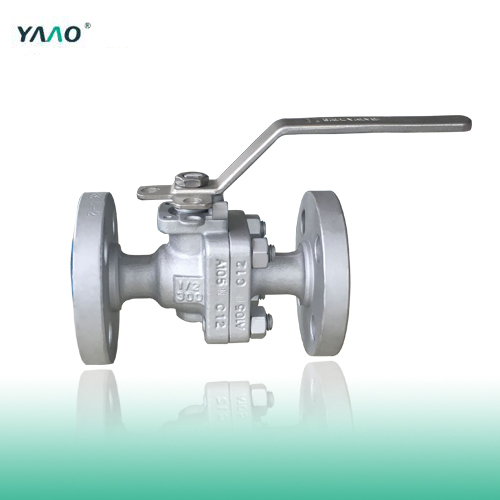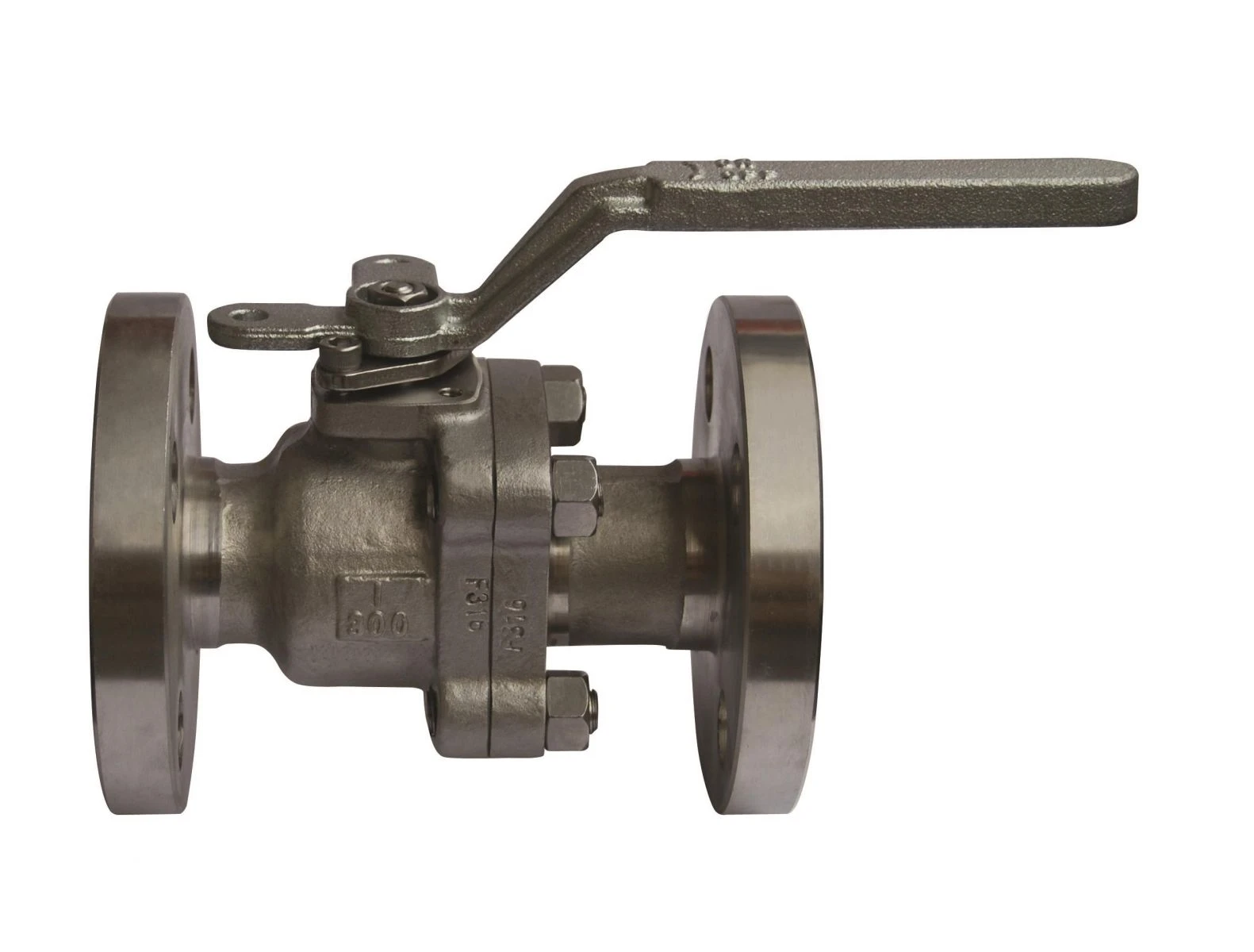Major structures of forged steel Ball valve: 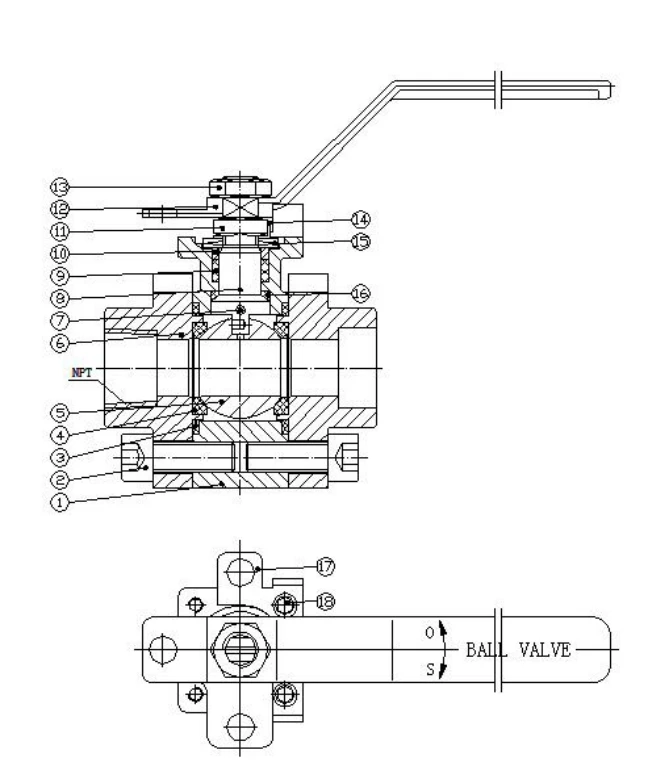
1. BODY. The valve body is forged steel and designed to the basic dimensional requirements of the applicable specifications such as API 6D. The body is available in both the full or standard port design.
2. BONNET BOLTING. The bonnet bolting is manufactured of alloy steel in accordance with the requirements of the applicable specifications such as API 602 and ASME B16.34.
3. GASKET. The bolted bonnet joint design valve uses a contained, controlled compression, spiral wound type gasket.
4. SEAT RINGS. The seat rings are steel and makeup part of the valve trim. They are pressed into the valve body and wedged into place, forming a seal with the body. The seating surfaces are ground and lapped.
5. BALL. The ball, which is solid design, is forged or investment cast steel and is part of the valve trim. The seating surfaces are ground and lapped.
6.BONNET. The bonnet is forged steel,which has dimensions per the applicable specifications such as API 6D.
7. SPRING. The spring with The steel/stainless steel material. It can put Seal onto the ball to seal up.
8. STEM. The stem is forged steel and part of the valve trim. It contains an integral back seat shoulder, which mates with the integral backseat of the bonnet. The stem is designed to the basic dimensional requirements of the applicable specifications such as API 602.
9. GLAND PACKING. The packing Install into the stuffing box of the bonnet , followed by pressing the valve stem bonded to form a seal.
10. GLAND AND FLANGE. The gland, gland flange assembly utilizes a separate, two piece design. This self aligning design allows the flange to be unevenly tightened while the gland maintains its parallel alignment with the stem and stuffing box.
11. GLAND BOLTS AND NUTS. The steel/stainless steel gland bolt and nut assembly is a stud eyebolt arrangement. This design allows complete removal from the valve when service is required. The use of industry standard thread full length studs and nuts also allows easy replacement should these items be lost or in need of replacement.
12.Lever. Handle install directly to the stem, urging to handle the handle is passed directly to the stem.
13. Lock nut . The steel/stainless steel nut, it is used to Fixed ball handle or lever .
14. Lock washer. The lock washer normally is stainless steel or other similar material . is widely used in bearings, lock nut, washer, its good durability.
15. Belleville spring. The shape of belleville spring is conical dish the different from traditional spring is that it has its special role in the function of the main characteristics, load, short stroke and small space required, the combination of easy to use, easy to maintain facelift, economic security high small for space, a large load of heavy precision machinery between 10% -75% of its compression stroke range of optimum operation at its maximum compression stroke.
16.Back seat. Back seat sealing force increases with increasing media pressure, strengthen the reliability of the seal packing.
17. Lock device. The lock device matched on the lever.The opening of the valve itself comes with locking means available to limit, to avoid accidents caused by open and non-normal use, it can be used to control a variety of important and dangerous gases and liquids, play a security role.
18. Bolt. The steel/stainless steel gland bolt and nut assembly is a stud eyebolt arrangement. This design allows complete removal from the valve when service is required. The use of industry standard thread full length studs and nuts also allows easy replacement should these items be lost or in need of replacement.

1. BODY. The valve body is forged steel and designed to the basic dimensional requirements of the applicable specifications such as API 6D. The body is available in both the full or standard port design.
2. BONNET BOLTING. The bonnet bolting is manufactured of alloy steel in accordance with the requirements of the applicable specifications such as API 602 and ASME B16.34.
3. GASKET. The bolted bonnet joint design valve uses a contained, controlled compression, spiral wound type gasket.
4. SEAT RINGS. The seat rings are steel and makeup part of the valve trim. They are pressed into the valve body and wedged into place, forming a seal with the body. The seating surfaces are ground and lapped.
5. BALL. The ball, which is solid design, is forged or investment cast steel and is part of the valve trim. The seating surfaces are ground and lapped.
6.BONNET. The bonnet is forged steel,which has dimensions per the applicable specifications such as API 6D.
7. SPRING. The spring with The steel/stainless steel material. It can put Seal onto the ball to seal up.
8. STEM. The stem is forged steel and part of the valve trim. It contains an integral back seat shoulder, which mates with the integral backseat of the bonnet. The stem is designed to the basic dimensional requirements of the applicable specifications such as API 602.
9. GLAND PACKING. The packing Install into the stuffing box of the bonnet , followed by pressing the valve stem bonded to form a seal.
10. GLAND AND FLANGE. The gland, gland flange assembly utilizes a separate, two piece design. This self aligning design allows the flange to be unevenly tightened while the gland maintains its parallel alignment with the stem and stuffing box.
11. GLAND BOLTS AND NUTS. The steel/stainless steel gland bolt and nut assembly is a stud eyebolt arrangement. This design allows complete removal from the valve when service is required. The use of industry standard thread full length studs and nuts also allows easy replacement should these items be lost or in need of replacement.
12.Lever. Handle install directly to the stem, urging to handle the handle is passed directly to the stem.
13. Lock nut . The steel/stainless steel nut, it is used to Fixed ball handle or lever .
14. Lock washer. The lock washer normally is stainless steel or other similar material . is widely used in bearings, lock nut, washer, its good durability.
15. Belleville spring. The shape of belleville spring is conical dish the different from traditional spring is that it has its special role in the function of the main characteristics, load, short stroke and small space required, the combination of easy to use, easy to maintain facelift, economic security high small for space, a large load of heavy precision machinery between 10% -75% of its compression stroke range of optimum operation at its maximum compression stroke.
16.Back seat. Back seat sealing force increases with increasing media pressure, strengthen the reliability of the seal packing.
17. Lock device. The lock device matched on the lever.The opening of the valve itself comes with locking means available to limit, to avoid accidents caused by open and non-normal use, it can be used to control a variety of important and dangerous gases and liquids, play a security role.
18. Bolt. The steel/stainless steel gland bolt and nut assembly is a stud eyebolt arrangement. This design allows complete removal from the valve when service is required. The use of industry standard thread full length studs and nuts also allows easy replacement should these items be lost or in need of replacement.


